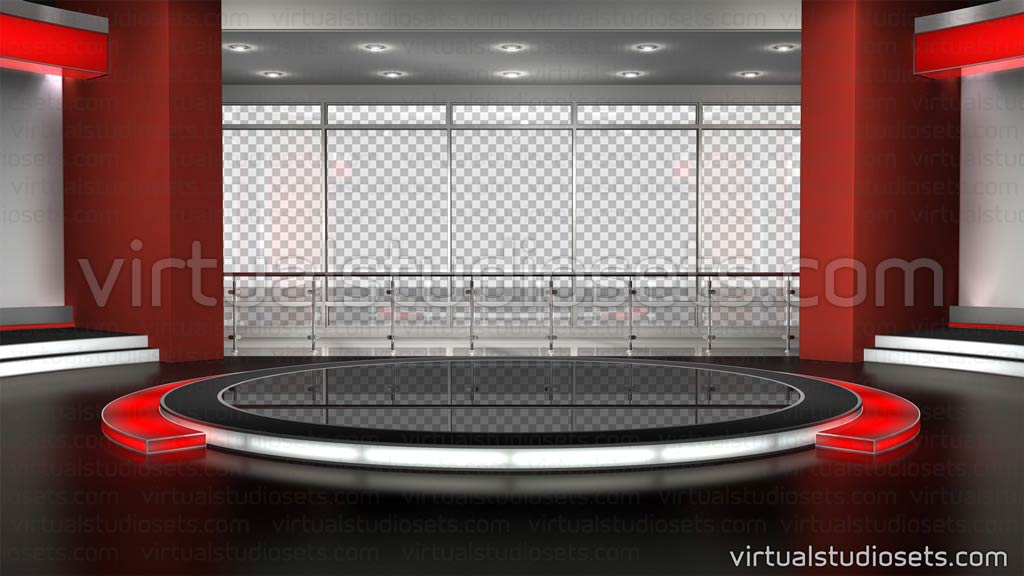Virtual Studio Sets – custom changes you can make yourself
posted by
ALL our virtual sets that feature a skyline outside the window will ALWAYS have an example skyline as a separate layer that you can replace with an image (or video) of your own!
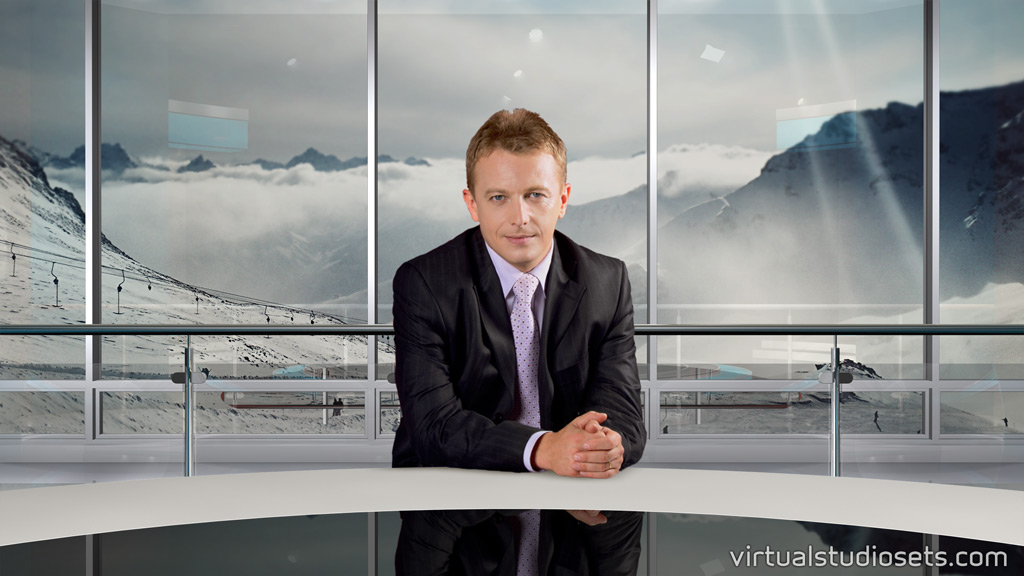
It’s just one of the MANY ways you can customize our virtual sets. Perhaps you’d like to see a picture of your own town or city outside the window, or maybe even create different versions for multiple clients of your own!
So let’s take a look at a few options, using Studio 1 as an example. Studio 1 does come with an example skyline supplied, but you can easily use your own image instead.
Have a look at the image below. This is the Photoshop version of Studio 1 with the skyline turned off. It has transparent areas for the window, and the shiny bit on the floor, and the railings and window frames are reflected with transparencies too. So any image that is placed behind the glass will automatically look like the view outside, and anything dropped behind the riser will look like the reflection. Because the transparency levels are built in, you don’t need to adjust your background images at all – just drop them in at 100% opacity and the layers on top will do the rest!
If you’re using a TriCaster you will find input layers already set-up and in position for all the various areas and reflections (assigned by default to Live Input B). You’ll also see the example images we’ve provided, but if you turn those layers off you’ll see the Live Inputs behind them. So, for example, you could have a live video feed, or a looping animation running in the background throughout your programme and it will appear as the skyline and its reflections. And if you want to use your own custom (static) image, you simply assign the source for each of those layers to point to that single 16×9 image file. The layers are all named with the word ‘skyline’ in the layer title.
If you’re using the individual PNG layers that come with every Studio 1 product (say, in After Effects) then simply add your own images instead of the example skyline. You can always explore the Photoshop file that’s included just to see how everything fits together.
All of our vMix virtual sets will have a dynamic layer already set up for the skyline. You’ll see it loads up with our example skyline as the default image, but you can easily assign your own source (static image, or moving video) to that layer.
We’ve grabbed a few images from royalty-free stock photo sites (stocksnap.io, unsplash.com among others) and quickly rustled up a few examples for you.
Skyline image examples
First up is a rather nice view of Prague. The original image is rather beautiful and has a nice ‘painterly’ quality to it. The end result has ended up looking rather like a massive Bruegel – but hey, maybe that’s just the look you’re after!
Notice that the reflections of the studio lights can still be seen in the window without any need to adjust anything yourself.
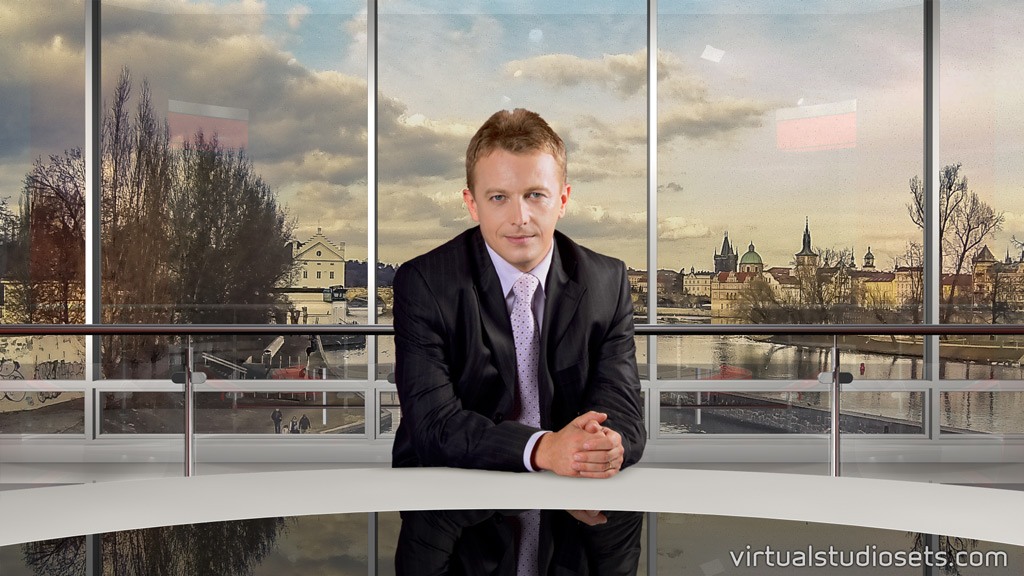
Next up is a nice hazy view over San Francisco which looks like it would work very nicely for an early evening or a breakfast show (not sure it matters if the original photo has the sun coming up, or going down!). We’ve changed the colours of the set too – it’s very easy to simply adjust the hue of the coloured layers until you have something you like, or something that matches your own station branding.
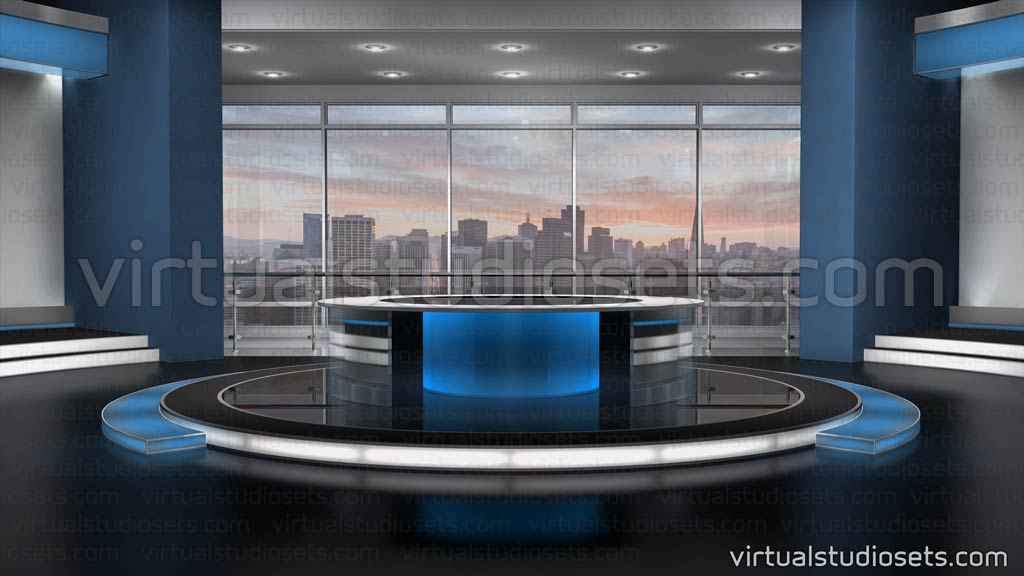
Here’s another similar example, this time using a free stock skyline of Paris, France.
We find that these custom backgrounds work best when the horizon line of the skyline image is positioned just above the handrail that runs behind the presenter so the perspective of the skyline approximately matches the (virtual) camera angle. Of course it depends a little on the original photo, and also assumes you want to give the impression that your studio is several (or many) floors up.
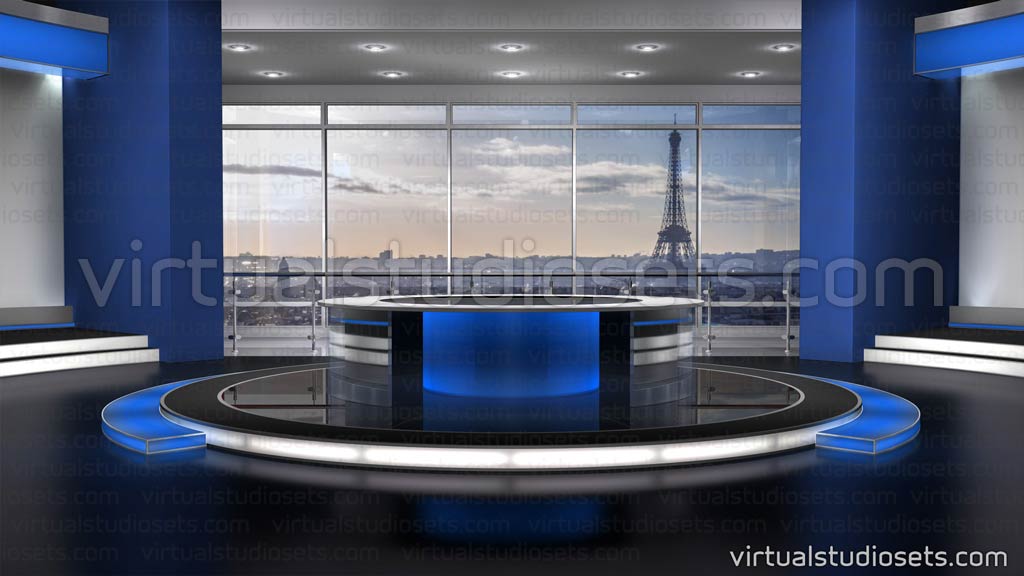
Let’s try a night-time image. This next example using a copyright free shot of Dubai would work nicely for an evening-time show – maybe a business/financial programme.
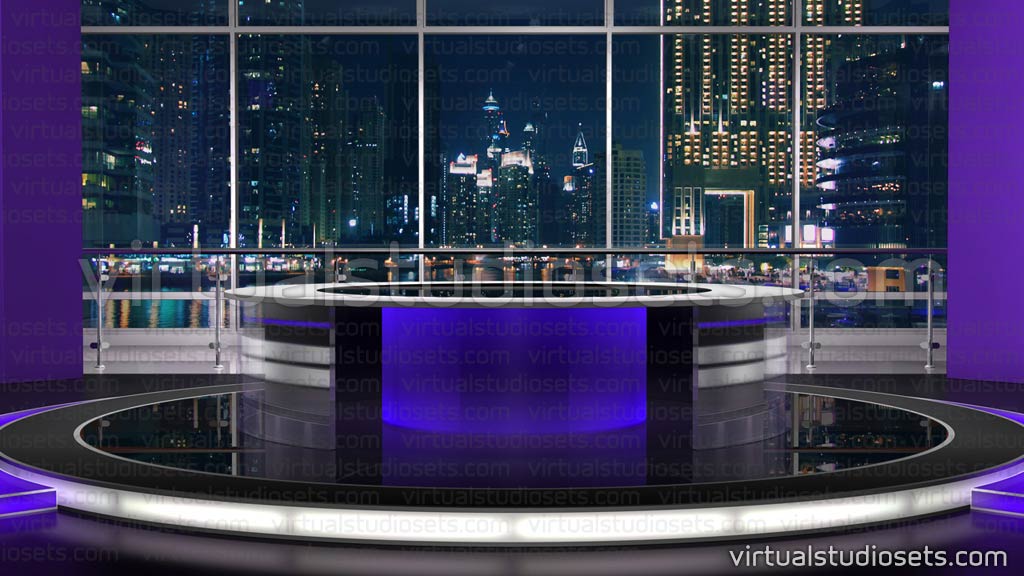
If you’re using a TriCaster or vMix, they’ll expect a 16×9 image to be used for the background (the higher resolution the better). We’ve set everything up using UV gradients so the skyline image will automatically be scaled correctly on the close-up angles and panned to reveal parts of the image on the side-angles that are out of shot on the wide angle.
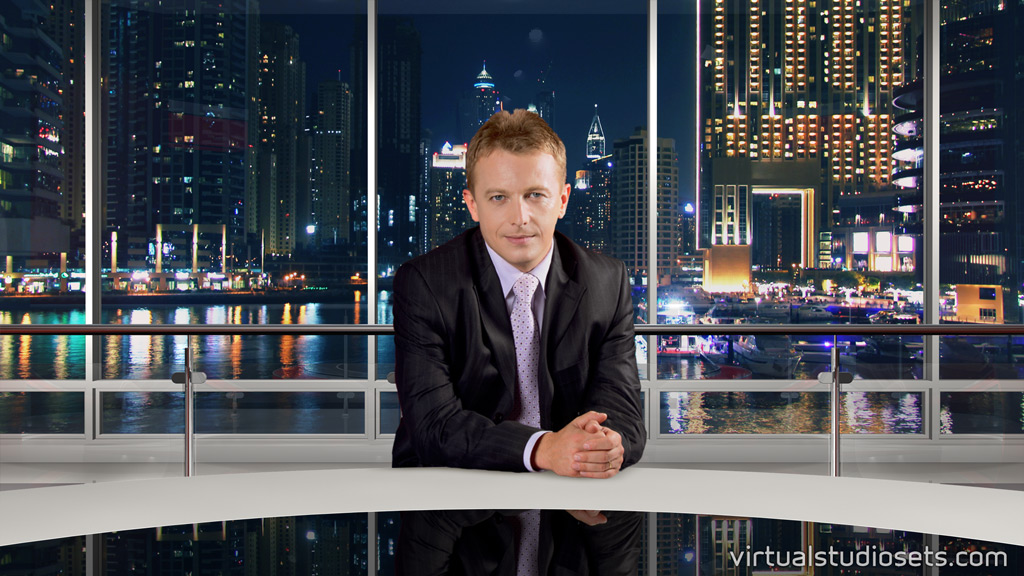
Here’s another night-time view, this time of Hong Kong.
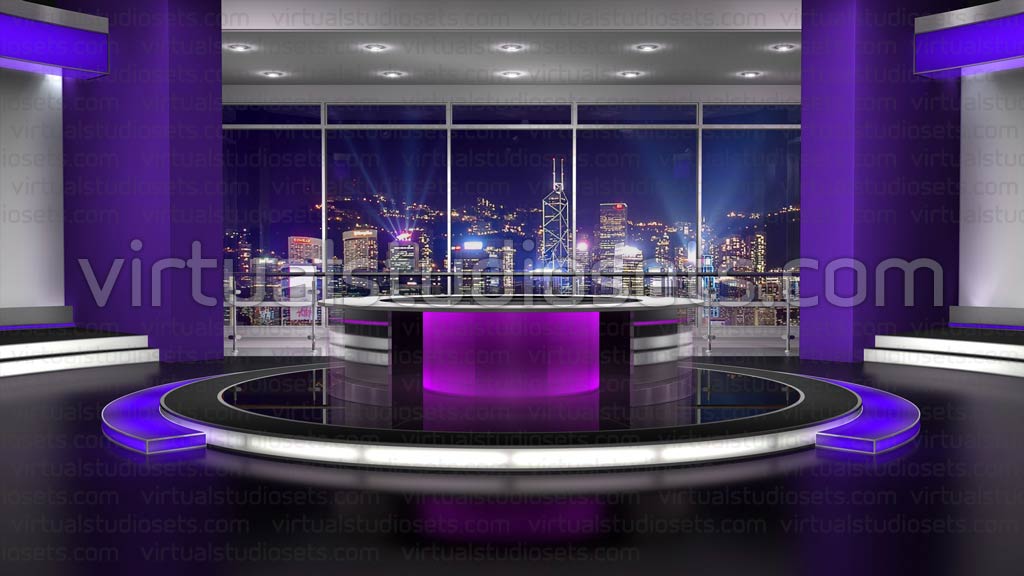
Of course, you can drop in any kind of image you like – it doesn’t have to be a cityscape.
Here’s another version of Studio 1 which uses a sports stadium image – it’s just a quick example of how you might use Virtual Studio Set 1 for a Sports show.

Although the stadium in the image was hosting a tennis match (we think) it’s positioned so we’re just seeing stands and floodlights. Something like this could work for any kind of sports virtual studio set and would work really nicely if it was a night-time shot with the floodlights on, or maybe if we were looking more closely at the crowd perhaps. Anything’s possible!
And the example at the top of this page is for an imaginary ski report. The original image of the ski-slopes had a bit of tilt-shift built in, which does give a suggestion of how these images might work if they have a little depth of field to them. Again, notice that the studio itself can be seen reflected in the glass. This all happens automatically because of the built-in reflections on the glassy bits (and because they’re not completely 100% transparent) so you’ll always get a sense that there’s some real glass there separating the background from the main virtual studio itself.
Anyway – we hope this gives you a quick idea of how it’s possible to change the background in the virtual studio set with very little fuss allowing you to give your show a unique customized look.
Incidentally, if you’re using any of our virtual sets and want to send us an image of how you have customized it yourself please feel free. We’d love to put together a gallery of examples of our virtual sets as they’re appearing on air around the world.
You can find all the Studio 1 virtual sets (single angles and multi-angle packs) here.
